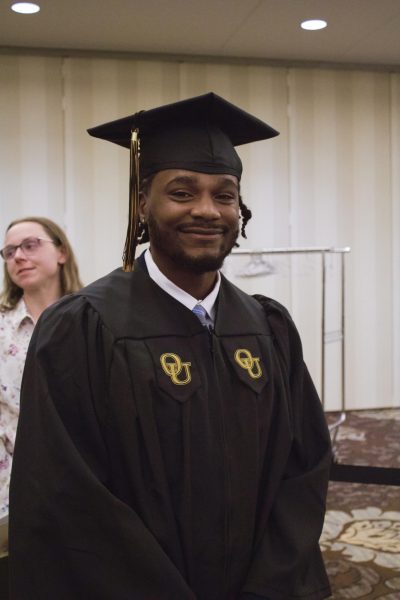Students study wildlife in OU’s biological preserve
Do you know what’s really living on Oakland University’s campus?
The BIO 4350/5386 Topics in Behavioral Biology classes at OU teamed up throughout the fall 2018 semester to be the first students to collect data and evaluate the species inside OU’s biological preserve. With the studying starting mid-September and ending mid-November, the students were able to further the university’s knowledge of what is really out there.
“The thing about this project that was important was documenting what kind of animals we have animals that we have on the oakland biological preserve,” said Emily Bovee, a second year master’s student at OU. “No one has ever really done a thorough survey before, and it’s important to know what kind of animals we have in our own backyard and how important this resource is that we are able and lucky enough to have.”
The class of 13, containing nine varying levels of undergraduate students and four graduate students, were split into two groups and assigned either the “low” habitat fragmented area closer to the university or the “high” habitat fragmented area closer to the R&S Sharf Golf Course. Using motion activated cameras, the students were able to track both the frequency and diversity within their areas.
“The most shocking thing was that our original hypothesis was to find more animals and more species of animals in the unfragmented areas,” Bovee said. “From our observational data analysis so far, we have seen there have been more animals in the fragmented areas, those are the areas that are closer to the golf course, and that was kind of really surprising to us, kinda opposite of what we thought was gonna happen.”
They were able to capture animals such as deer, turkeys, coyotes and even someone walking their dog. Not all discoveries were as predictable, though — the students also unexpectedly captured the nocturnal flying squirrel and mink.
“We did not know what to expect in the preserve. All the results were very interesting, especially finding those very unique species that we did not anticipate,” said Dr. Sandra Troxell-Smith, a special lecturer in the Department of Biological Sciences. “The students are still calculating the data and looking at diversity differences and the locations also looking at differences in abundances of certain species.”
The graduates were assigned to write a grant proposal that would discuss animal behavior in their ongoing research. Bovee works in an ecology lab and had her proposal focus on the behavior of New Zealand mud snails.
“That’s an invasive species in northern Michigan and I research the species in the Au Sable River, so I wrote a proposal about how their behavior allows them to avoid predation in the wild,” Bovee said.
Troxell-Smith considered this project to be a success with a plethora of newfound information. She said the students did a great job with their camera placements and with analyzing the data.
“I definitely hope to continue research and camera surveys [in the future] just to see who’s out there and see over time how the population is changing,” Troxell-Smith said.







